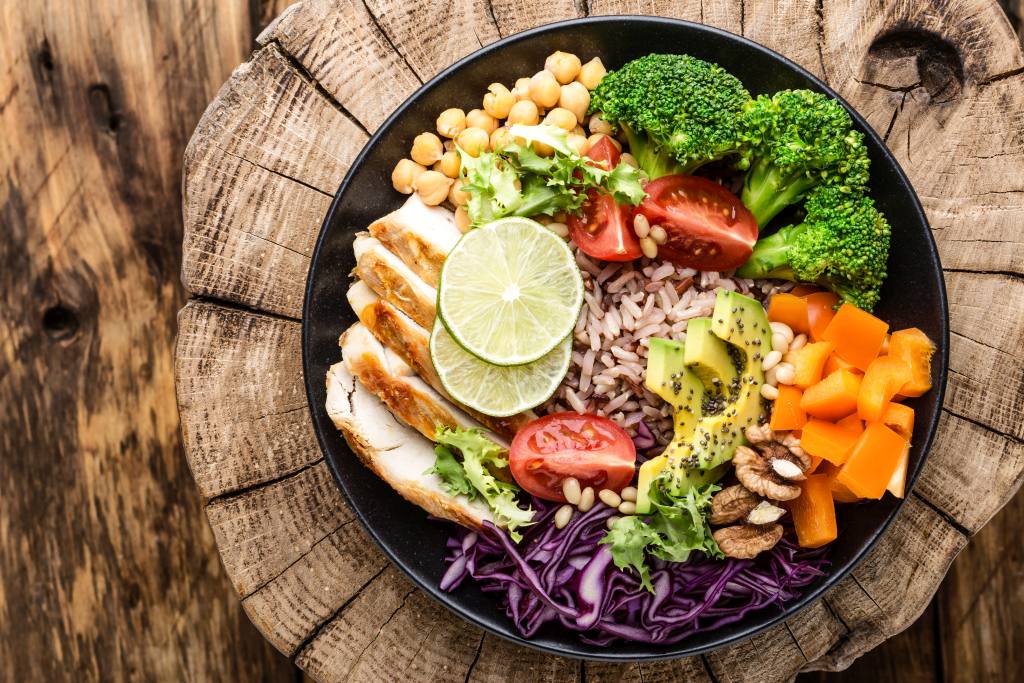Meal planning is a powerful tool for achieving a balanced diet and maintaining a healthy lifestyle. It allows you to make thoughtful decisions about what you eat, ensures you get the right nutrients, and can even save time and money. Whether you’re new to meal planning or looking to refine your approach, this guide offers practical advice to help you succeed.
Understanding Balanced Meals
Before diving into meal planning, it’s crucial to understand what constitutes a balanced meal. A balanced diet includes a variety of foods from all the major food groups:
- Protein: Lean meats, poultry, fish, eggs, beans, and legumes.
- Carbohydrates: Whole grains, fruits, vegetables, and legumes.
- Fats: Healthy fats from avocados, nuts, seeds, and olive oil.
- Vitamins and Minerals: Fruits and vegetables, which provide essential vitamins and minerals.
A balanced meal should ideally include a good mix of these components to provide your body with all the nutrients it needs to function optimally.
Tips for Creating Nutritious Grocery Lists
-
Plan Your Meals for the Week
Start by planning your meals for the week. This helps you create a focused grocery list and prevents impulse purchases. Write down breakfast, lunch, dinner, and snack options for each day. Consider incorporating different proteins, grains, and vegetables to keep meals interesting and varied.
-
Make a Comprehensive Grocery List
Once you’ve planned your meals, create a detailed grocery list. Categorize items by type—produce, dairy, proteins, grains, and pantry staples. This organization can streamline your shopping experience and ensure you don’t forget any essentials.
-
Focus on Whole Foods
Prioritize whole foods such as fresh fruits and vegetables, lean proteins, and whole grains. Avoid highly processed items and sugary snacks, which can undermine your efforts to maintain a balanced diet. Stick to the outer aisles of the grocery store where the fresh and unprocessed foods are typically located.
-
Check for Seasonal Produce
Incorporate seasonal produce into your meal planning. Seasonal fruits and vegetables are often fresher, more affordable, and packed with nutrients. Check your local farmer’s market or grocery store for seasonal options.

Meal Prepping for Success
-
Batch Cooking
Batch cooking involves preparing large quantities of food at once, which can be portioned out for multiple meals throughout the week. Cook staples such as brown rice, quinoa, or roasted vegetables in bulk, and use them as the base for various dishes. This approach can save time and ensure you always have healthy options on hand.
-
Use Freezer-Friendly Recipes
Prepare meals that can be frozen and reheated easily. Soups, stews, casseroles, and cooked grains are great options. Label and date your freezer bags to keep track of what’s inside. This technique is especially useful for busy days when you don’t have time to cook from scratch.
-
Invest in Good Storage Containers
Quality storage containers are essential for meal prepping. Opt for containers that are BPA-free, microwave-safe, and have tight-fitting lids. Glass containers are a great choice as they are durable, easy to clean, and don’t retain odors.
-
Prepare Snacks Ahead of Time
Healthy snacks are crucial for maintaining energy levels throughout the day. Pre-portion snacks such as nuts, cut vegetables, and fruits into individual servings. Store them in easy-to-reach containers or bags to grab on the go.
Ensuring Variety in Your Diet
-
Mix Up Your Proteins
Include a variety of protein sources in your meals, such as chicken, fish, beans, tofu, and eggs. This not only prevents meal fatigue but also ensures you get a range of nutrients. For example, fish provides omega-3 fatty acids, while beans offer fiber and plant-based protein.
-
Incorporate Different Vegetables
Rotate through different vegetables to ensure you’re getting a broad spectrum of vitamins and minerals. Experiment with both familiar and less common vegetables to keep meals exciting. For example, try adding kale, bell peppers, and sweet potatoes to your weekly rotation.
-
Explore New Recipes
Trying new recipes can make meal planning enjoyable and prevent boredom. Explore various cuisines and cooking techniques to discover new favorites. Websites, cookbooks, and cooking apps offer endless recipe ideas and can help you maintain variety in your diet.
-
Adapt to Your Lifestyle
Consider your lifestyle when planning meals. If you’re often on the go, focus on quick and easy recipes that can be prepared in advance or take minimal time to cook. For weekends or days when you have more time, try more elaborate recipes or new cooking techniques.
Practical Meal Planning Strategies
-
Prepare a Weekly Menu
Create a menu that outlines your meals for the week. This can be a simple list or a more detailed meal plan with recipes. Having a menu in place helps you stay organized and ensures you’re prepared for each meal.
-
Keep a Pantry Inventory
Maintain an inventory of your pantry staples, such as canned goods, grains, and spices. This helps you avoid purchasing items you already have and makes it easier to plan meals around what’s on hand.
- Stay Flexible
While having a plan is essential, flexibility is also important. Life can be unpredictable, and plans might change. Be prepared to adapt by having a few easy-to-make meals or leftovers available for days when things don’t go as planned.
-
Evaluate and Adjust
At the end of each week, evaluate what worked well and what didn’t. Adjust your meal planning strategy accordingly. Consider factors such as portion sizes, meal variety, and how well the plan fit with your schedule.
Conclusion
Meal planning is a valuable practice for maintaining a balanced diet and a healthy lifestyle. By creating a well-thought-out grocery list, incorporating meal prepping techniques, and ensuring variety in your diet, you can make nutritious eating both enjoyable and manageable. With these tips and tricks, you’ll be well on your way to mastering meal planning and achieving your health goals.

Leave a Reply